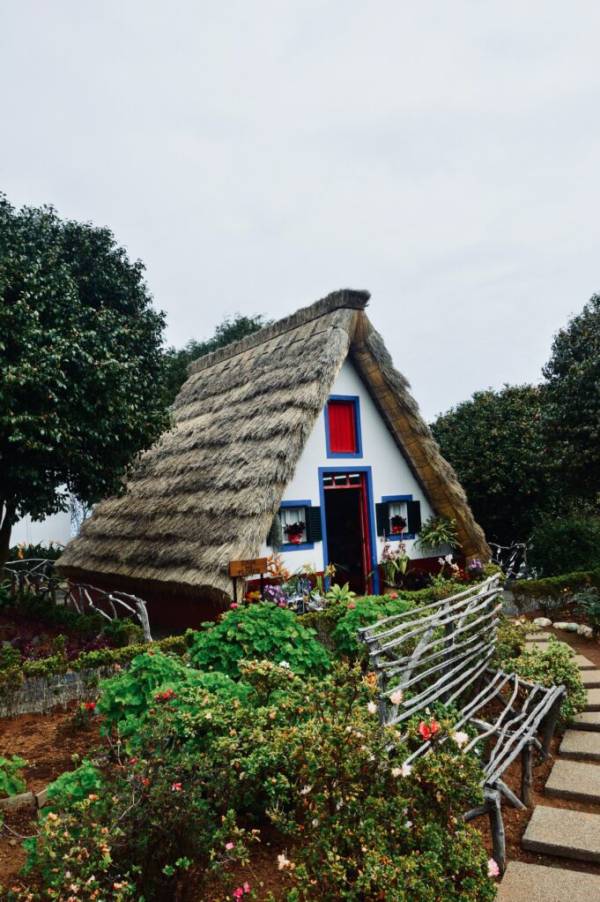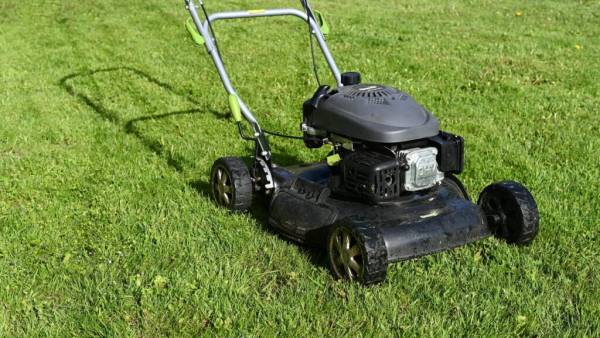Gardening is a relaxing and fun way to be connected with nature. We all wish to make our gardens look green and lush. Unfortunately, attaining this requires a lot of watering.
Plenty of water is also wasted during the process.
Water is not a limitless natural resource. Conserving water in your landscape can not only protect your community’s water supply but can also help you reduce your water bill.
Today, we will cover 15 water-saving techniques for your garden: simple changes in habit or one-time investments in water-saving appliances.
So, let’s dive in!

- 1. Nourish the Soil
- 2. Mulch Your Garden
- 3. Repair Hose and Sprinkler Breaks
- 4. Install Water Butts
- 5. Consider Your Watering Timings
- 6. Choose Native Plants
- 7. Group Plants that Require Similar Watering
- 8. Consider the Climate and Natural Landscape
- 9. Use Drip Irrigation System
- 10. Avoid Watering Every Day
- 11. Conserve Water Used in Kitchen
- 12. Use Water Retaining Crystals
- 13. Set the Lawn Mower Blades High
- 14. Cut the Losses
- 15. Use a Moisture Meter
1. Nourish the Soil
The foundation of a garden is its soil.
To make the soil healthy, most people use chemical fertilizers. But organic matters are also great for your soil.
These natural components not only increase productivity but help to retain the moisture of your soil and increase its absorbance.
Organic matter includes animal manures, vegetable and fruit peels, chopped leaves, etc.
2. Mulch Your Garden
Covering the bare soil with thick layers of mulch is an excellent water-saving method.
It keeps the roots cool, lessens soil erosion, represses weeds by restricting access to sunlight, limits evaporation, and most importantly, retains soil moisture; thereby, you do not need to water too often.
Moreover, organic mulches such as grass clippings and shredded leaves break down with time and liberate nutrients into the soil.
3. Repair Hose and Sprinkler Breaks
If you use sprinklers, address the municipal water district of your area and request them to ensure that your garden’s irrigation system is working effectively and has no leaky cracks or concealed line breaks.
It is also wise to check your hoses on a regular basis. Hose or sprinkler leaks are very common reasons for wasting water unknowingly.
4. Install Water Butts
Installing water butts for collecting rainwater is a smart way to conserve water and the most common trick to reduce water bills.
From rotund 2,000-liter ones to slimline 100-liter containers, water butts are of various sizes and are pretty easy to install.
If there is enough space, attach the butts to drain pipes on the shed, garage, house, and greenhouse near your plants.
Thus, your water collecting potential will be maximized, and you won’t need to drag the loaded cans around your garden when watering.
5. Consider Your Watering Timings
Here are some tips:
- The best time for watering your garden is in the morning or the evening.
- Watering around midday is a waste due to evaporation.
- A large volume of water is lost in the air due to the sun’s heat before the soil can soak it.
- Moreover, watering in broad daylight can harm your plants sometimes when the water drops sitting on the leaves act as a magnifying glass and burn the leaves of your plants.
- Therefore, wake up early or wait till the sun goes down in the evening to water your garden.
- Usually, the ideal time for watering is in the morning before the rise of the temperature.
- The winds are lower in this hour which dramatically reduces evaporation.
- Also, watering at dawn gives your plants the strength to face the sun’s warmth.
Following these tips will help you to conserve water in your garden.
6. Choose Native Plants
When selecting plants, choose native varieties.
Native plants and trees are adapted to the climate and require much less watering. It is entirely possible to grow a beautiful landscape filled with native water-wise edible plants, perennials, shrubs, and trees.
Furthermore, choosing native plants and trees will help the garden to be associated with the ecosystem.
For instance, subtropical and tropical trees have no business developing in rising hot and dry climates as they need a huge volume of water supply to survive.
7. Group Plants that Require Similar Watering
Plants that require the same amount of water to flourish are called hydrozones.
Hydrozoning is a very practical way to save water.
Shrubs and trees need deep watering but less frequently, whereas lawns need more repeated watering.
- As lawns need the maximum amount of watering, it is recommended to plant it only where it holds an actual function and overlay a little area.
- Likewise, vegetable plants that produce edible roots, fruits, or bulbs and require comparatively heavy watering should be planted in a close area.
- Then, grow the perennial herbs requiring less water in a separate area altogether.
That’s how to conserve water in your garden using hydrozoning.

8. Consider the Climate and Natural Landscape
If the climate of the area you’re living in has heavy precipitation, it is probably not necessary to water your plants often as you can heavily depend on rainwater.
Even if it is a desert, many vegetable plants can survive without watering for 4–10 days based on soil type, enough mulching, and how long they have been established.
Water always flows downhill; therefore, if the space where you plant your trees is sloped, plant trees that require heavy watering at the bottom-most part where the maximum amount of water will eventually travel.
Ensure that no water accumulates there beyond 24 hours as this may stir up soil-borne diseases.
Trees that need less water supply will be fine at the topmost part. This approach will minimize your gross watering requirements and enable your trees to flourish in the natural rainfall pattern of your climate.
9. Use Drip Irrigation System
Drip irrigation systems are efficient for watering your garden without misspending water.
While watering, these systems target the roots of the plants. Watering at the base or root is always recommended instead of overhead watering. When watering overhead, less water reaches the roots, which stirs up the growth of soil-borne diseases.
10. Avoid Watering Every Day
A lot of plants do not require watering every day.
Plants do well if the soil remains slightly dry between waterings, which allows them time to consume oxygen via their roots.
Moreover, the plant roots can suffocate and decay when the soil stays saturated for an extended period.
It would be best if you watered your vegetable gardens every 2–10 days based on the precipitation patterns. And when watering your lawn, do it sparingly.
If you water 30 minutes or more every three days, the water goes deeper into the earth and forces the roots of the grass to extend downwards. This makes the roots stronger and is less affected by dry spells.
If you water your lawn too frequently, it will weaken the roots, and more brown spots can develop at the time of hot spells.
This may eventually become an endless loop of misspending water. Less frequent watering will not only make your garden healthier and save water but also make it less vulnerable to drought.
11. Conserve Water Used in Kitchen
You can use the leftover kitchen water from hand-washing and cleaning the dishes safely on plants, provided that the water is not excessively contaminated with grease and food scraps and does not contain bleach.
The same goes for the water used to cook vegetables, pasta, and eggs. Let the water cool down after cooking and use it to water the plants.
This water is loaded with nutrients that can promote the growth of your plants.
12. Use Water Retaining Crystals
Mix water retaining crystals to the potting compost to save more garden water.
These tiny crystals soak up and store moisture that can keep the roots moist throughout the day.
13. Set the Lawn Mower Blades High
During summer, you should mow the lawn about 2–3 inches.
The raised blades shade each other while the roots go deeper into the soil. This eventually reduces the water requirement and makes the grass more resistant to heat and drought, which is necessary for the hot summer days.
Likewise, with shrubs and flowers, shade the base and allow them to become a little wild to avail the soil to reserve more water.
Growing more trees can also form more shade with the trees growing over time, which will further minimize your water needs.

14. Cut the Losses
Do not waste water behind sickly plants.
Preserve water for healthy, surviving plants, and do not worry about mature shrubs and established trees as they are virtually drought-proof.
15. Use a Moisture Meter
With the help of a moisture meter, you can quickly know when it is time to water your plants.
- If the moisture meter shows 80–100%, it indicates that the soil is soaked. Therefore, you need to avoid overwatering.
- When it shows 40–70%, the soil is in precise condition to water.
- And when it indicates 10–30%, you should rush and water your plants as it means the soil is unduly dry.
That would be all!
The Bottom Line
Besides the ways mentioned above, consider taking smaller steps, such as washing your vehicles in the garden, walking less on the grass, etc.
I hope these suggestions can help you conserve water in your garden and minimize your outdoor water usage while relishing a healthy and beautiful garden.
Regards,
Happy saving!
